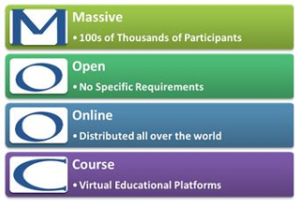
Arquivo para a ‘Framework’ Categoria
Revolutionary method for videos
Researchers at Carnegie Mellon University have developed a method that without human intervention modifies a video content from one style to another. The method is based on a data processing known as Recycle-GAN that can transform large amounts of video making them useful for movies or documentaries.
modifies a video content from one style to another. The method is based on a data processing known as Recycle-GAN that can transform large amounts of video making them useful for movies or documentaries.
The new system can be used for example to color films originally in black and white, some already made like the one shown in the video below, but the techniques were expensive and needed a lot of human effort during working hours.
The process arose from experiences in virtual reality, which in addition to the attempts to create “deep falsities” (altering objects or distorting contents, could appear a person inserted in an image, without it was allowed, in everyday scenes almost always happens this and much people do not accept.
“I think there are a lot of stories to tell,” said Aayush Bansal, a Ph.D. student at the CMU Robotics Institute, who said of a film production that was the main motivation to help design the method, he said, allowing that the films were produced faster and cheaper, and added: “it is a tool for the artist that gives them an initial model that they can improve,” according to the CMU website.
More information on method and videos can be found at Recycle-Gan website.
Qubits Storage Preset
The quantum bit or qubits, is the bit unit for quantum storage made in the latest technology through photons.
through photons.
Silicon chips, which come from old transistor technology that oscillates between two states of electric charge, 0 or 5 Volts, only have the two states, but the quantum chips may have the “1” and “0”, a third state in which they are “interlaced” and this gives the possibility of storing more than two bits in a photon result in 3 qubits.
Using this physical fact of quantum physics, scientists at the University of Science and Technology of China have managed to store 18 qubits in only 6 interlaced photons, which is a record.
But not everything should be celebrated, while the two simple states of the qubits are processing at practically light speeds, the interlacings take a few seconds, which according to Sydney Chreppler, a quantum physics researcher at the University of Berkeley (USA), is an “eternity” gor the processing of quantum bits.
The possibility of quantum storage will not only give a jump in the storage of computers, but also in their speeds, since the speed of light photons, even in a physical medium that reduces the speed, optical fiber or corresponding circuits, which will change the computing power making current storage possible in Zettabits (10 ^ 21).
The article was published in the scientific journal Physical Review Letters, is also available for reading on arXiv. [LiveScience]
Mixed Reality and Artificial Intelligence
Among the emerging technological innovations in the year 2018 is Mixed Reality (MR) and Artificial Intelligence (AI) Microsoft CEO Satya Nadella already pointed to one of the future solutions, HoloLens, a RM + IA solution that helps users do things that were previously impossible.
year 2018 is Mixed Reality (MR) and Artificial Intelligence (AI) Microsoft CEO Satya Nadella already pointed to one of the future solutions, HoloLens, a RM + IA solution that helps users do things that were previously impossible.
Virtual Reality are environments that shut out the real world, Augmented Reality are digital content apn top of the real world and mixed reality digital content interacts with the real world.
The ability to merge the physical and digital worlds (the analogical concept applies to devices, but not to the real world), makes mixed reality allow to build experiences of people, places, and things regardless of their physical location and can interact digitally, I call this a multi-presence.
The companies promise, among them Microsoft, to incorporate HoloLens with more AI by building a Holographic Processing Unit or HPU. The mixed reality is avenging, in addition to the software available next to Windows 10, because experiences in the experiences of RA and RV, you can have the best of both worlds, RV is charming, but has a hypnotic effect, RA lacks realism.
Future experiences should incorporate sharing in the RM environment, a disruptive application of social media, with experiences that break down the walls of isolation and who knows, give a more educational dimension to the games.
The mixed reality can connect people in a meaningful, convincing and content-filled way, the multi-party will unite us, wait for a new application.
Zero UI – Interfaces of the Future
In the simplified definition of Andy Goodman Zero UI is the use of the perception of an object for the manipulation of an object projected in another environment – real or virtual.
use of the perception of an object for the manipulation of an object projected in another environment – real or virtual.
I call this multi-presence, because the real or virtual object is in another environment and is manipulated as if its presence were in a certain one, but the future of these environments will be the sharing as we saw in the previous post, so multipresencial.
I quote Andy Goodman not because he is a computer expert, but exactly what we need an education expert for an online world, he gives seminars on storytelling and storytelling, open education courses, director of the Fjord Solid group, where there are inúmeras Open4Education initiatives, and it supports collaboration on Google’s atap site.
If you want to understand the name, it is very simple, the phrase is from Golden Krishna: “the best interface is no interface”, this means a holographic and haptic interface that is manipulated in the air, and a “almost hidden” machine certainly provided with some artificial intelligence algorithm, receives the commands and performs the desired task.
Companies are eyeing, the Adobe blog, talks about interfaces without screens, and thinks of ultrahaptic interfaces, using ultrasound for touch perception and giving the user the necessary reaction to the touch so that he feels what he is doing.
Microsoft is advancing with its HoloLens project, despite the uncomfortable use of the promises of advanced advantages of its environment, in addition to a simple and powerful usability.
South Korea’s ETRI has announced the use of an international standard for Zero UI automatic interpretation interfaces that enables seamless interaction between users and smartphones without the need for a medium, the standard that should have a rapid expansion for smartphone users, can make a de facto standard and compel other companies to mold to this model.
Interfaces UI will be common use in a short time, forcing the conservative user to once again adapt or stay in the world without connection, there are those who prefer this.
News in Google News
After several announcements, finally in the second half of May Google launched its new application, only now I have been able to take a look at the application that replaces Google Play Nwesstad, now with use of Artificial Intelligence.
only now I have been able to take a look at the application that replaces Google Play Nwesstad, now with use of Artificial Intelligence.
The application works on using machine learning to train algorithms that scour complex and recent news stories and divides them into an easy-to-understand format with timelines, local news and stories presented in a sequence according to the evolution of the facts, for example , the start of a football match, its most important bids, the result and the consequences.
This section which are news that the algorithms think important to you have the name For You, follow 3 more sections so divided: The second section is called Manchete, where the latest news and specific topics are presented. Here is a subsection where you can choose to read the news through Full Coverage by Google, where Google splits it into items from a variety of social media sources, letting you know where and when it happened.
The third section shows favorites, such as the top topics the user usually accesses, the AI has great work there, goes to the owner’s favorite sources, saves stories for later readings, and saves searches according to the location of the texts.
And finally the White Play (White Play) which is the addition of the new Google news, which allows the user to access and subscribe services with premium content in news sites.
While a part of the critique continues to duel with the old canned news schemes linked to editorial groups, the world of personalized news evolves
Personal assistants arrive at the office
In some doctors’ offices already use Google Home, Assistant and Translate, in addition to the indispensable Agend, whoever starts using it does not leave it any more, it avoids scheduling conflicts and warns forgetfulness, but the idea now is to integrate these environments into “Medical Digital Assit “, developed by the doctor Steven Lin of Stanford University made next to the CNBC.
Agend, whoever starts using it does not leave it any more, it avoids scheduling conflicts and warns forgetfulness, but the idea now is to integrate these environments into “Medical Digital Assit “, developed by the doctor Steven Lin of Stanford University made next to the CNBC.
According to CNBC site, the project is in the health group of the daring Google Brain project, part of Google’s division in artificial intelligence, having as its “ambitious goal” to deploy external health care trials before the end of 2018.
The main goal, however, is to assist physicians in their reports and medicals records, before beginning the studies the Stanford School of Medicine made a survey where they found that doctors lose 6 to 11 hours of their daily work to document the histories patients’ clinics, so it is often easier questions, but patient responses may be inaccurate or ignore relevant data.
The problem of accuracy is key, the CNBC website explains the difference between an interpretation and “hipo” or “hyper” can be fatal, hypoglycemia is exactly the opposite of hypoglycemia if the doctor does not check this carefully.
The first phase of this study is expected to conclude in August, Lin said both parties plan to renew collaboration for the second phase for at least a year.
Microsoft and Amazon are also reportedly developing systems similar to artificial intelligence, and the main focus remains on developing clinical reports
A view of personal assistants
Personal assistants are emerging in a variety of companies and applications: Apple’s Siri,  Microsoft’s Cortana and Google now, Alexa´s Amazon and the less well-known environments that support many developments such as Speaktoit and DialogFlow stand out in popularity.
Microsoft’s Cortana and Google now, Alexa´s Amazon and the less well-known environments that support many developments such as Speaktoit and DialogFlow stand out in popularity.
The voice assistant, as I prefer to call it, the Cortana now associated with Windows 10, has this name due to the character of the Halo series, with Jen Taylor, character voice actor, who lends her voice to the personal assistant (Foley, 2014).
Siri is an Apple Personal Assistant style application, ie for iOS, macOS and watchOS, so it is available for iPhone, iPad and the like. Speaktoit has something else, by a voice-activated wizard that has an avatar on the screen.
The wizard is actually a cartoon character who talks with quotations on balloons and gives you some interesting human interaction appearance.
By the end of 2014 this wizard had more than 13 million users in 11 different languages in a category of 6 applications called LifeStyle was the main application among those used by Google Play in the USA.
In September 2014, Speaktoit released the api.ai (voice enable engine that powers the wizard) to any developers, who allow both the use of avatars with the addition of voice interfaces to applications based on Android, iOS, HTML5 and Cordova.
Although discontinued in December 2016, API.ai uses its features and is integrated with dialogFlow, which can be considered with its continuity.
References:
Brandon, John. “Speaktoit Review“, Laptop magazize, 2013.
Foley, Mary Jo «Microsoft’s ‘Cortana’ alternative to Siri makes a video debut», ZDNet, 2014.
Tolentino, Mellisa “New platforms, upgrades simplify life for IoT developers“, siliconANGLE, 2014.
The first quantum computer hub
The North Carolina State Unit was chosen by IBM to have the first Quantum Computing Hub (Q Hub that became part of IBM’s Network Q), as well as the first networks linking some universities.
(Q Hub that became part of IBM’s Network Q), as well as the first networks linking some universities.
On December 5, 1969, ARPANET joined the Research Agency of the US Department of Defense, the University of California, Los Angeles (UCLA), the Stanford Research Institute (SRI) at Menlo Park, the University of California, Santa Barbara (UCSB) and the University of Utah (photo).
Students, faculty and researchers will be able to access IBM’s 20-bit supercomputer to solve classic computing problems that would take a long time to process, now they will be done in a few minutes depending on the problem.
Bob Sutor of IBM Research said “we can not create a computer with 10% of the Earth’s atoms, but even so, with the quantum computer we can represent exactly this information”, according to a post on Techinician Online.
IBM’s plan is more audacious, with Fortune 500 companies and universities working to solve larger problems more quickly through the Q Network, while NC State will be collaborating with local organizations to solve complex equations.
NC State faculty are developing both undergraduate and graduate courses to use quantum computing to build their knowledge in anticipation of the hub’s operational debut this fall (in September).
We are so connected this way
The so-called “small world” phenomenon, worked on and addressed in Social Network Analysis (not to be confused with social media) is the idea that everyone can be connected through only six degrees of separation, and this has inspired not only scientists , but also artists, journalists, business people and the general public since the idea emerged in a 1990 John Guare play.
confused with social media) is the idea that everyone can be connected through only six degrees of separation, and this has inspired not only scientists , but also artists, journalists, business people and the general public since the idea emerged in a 1990 John Guare play.
Despite recent appearances of this concept in the media, illustrating the widespread belief in universal connectivity, there is also controversy over the same claim, and Barabási’s non-scale model is one of them, though his book Linked: the New Science of networks (2009) is the best reading of the topic.
Two examples cited are “Xing,” a network of potential subscribers referring to the idea of ”six degrees of separation,” and the attempt by the American television network ABC to conduct its own version of an experiment to test the same idea , through a “six degree” charity initiative using the concept on their website in an attempt to collect donations to a network of various charities.
Although Milgram’s experiment has already dealt with the subject, a manuscript by Pool and Kochen (Contacts and influence Social Networks, 1 (1978)) circulating around 1958 would have been the first version of the idea, but it was only published 20 years later, then not everyone gives credit.
The important thing about Pool and Kochen’s work is that they tried to give a mathematical structure to their “contact networks” following the path of other theorist as the mathematician. Rapoport (Spread of information through a population with socio-structural bias: I. Assumption of transitivity, 1953).
One prank to take this test is to use “Bancon’s Oracle” (by Kevin Bacon) on oracleofbacon.org and get the connection of Pope Francisco with Toshirô Mifune, for co-performances in films, the pope has already participated in two movies (see above)
A way forward in education
The basic basic education as stated in the first post of empathy, the ability to resolve conflicts and it will not be possible with online education reach the levels of schooling for the lower age groups, but from the first schooling.
ability to resolve conflicts and it will not be possible with online education reach the levels of schooling for the lower age groups, but from the first schooling.
I call this age up to 10 or 12 years, it is possible to observe that online education helps and can be of great advancement, especially for children living in peripheral countries have a school performance capacity above what would be appropriate for their age, of course this child should enjoy normal channels of empathy and sociability of his age.
But at the higher level we can have higher quality jumps and provide high schooling on a world scale, just to give an example, India that still has alarming levels of health and poverty is a country that generates brains and high school students.
Massive Open Online Curses (MOOCs) is a type of open course offered through virtual learning environments, Web 2.0 tools or social networks that aim to offer a large number of students the opportunity to attend without physical presence in universities and without costs of housing, transport, etc.
A fake News ran this universe saying that the MOOCs were born in 2012 and died in 2014, but this is not true, the numbers prove this: the current numbers according to the Central-Class site, the number of online students is 58 million distributed in more than 700 universities, in 6850 courses, also the graphics of this site show increasing values.
In Brazil, large universities already have online courses, for example: FEA, from USP, has a course on Fundamentals of Administration (FEA / USP), available on the Veduca online education platform in Brazil. who wants to learn how to manage, another course is Social Responsibility and Sustainability of Organizations (PUC / RS), a PUC course in Rio Grande do Sul available in Miríada X, the Physics of São Carlos has The Basic Physics course (IFSC / USP) the course has a workload of 59 hours divided into 26 classes and UNB has the Bioenergetics course (UNB), which allows the interested party to choose to attend classes or obtain the certificate.

